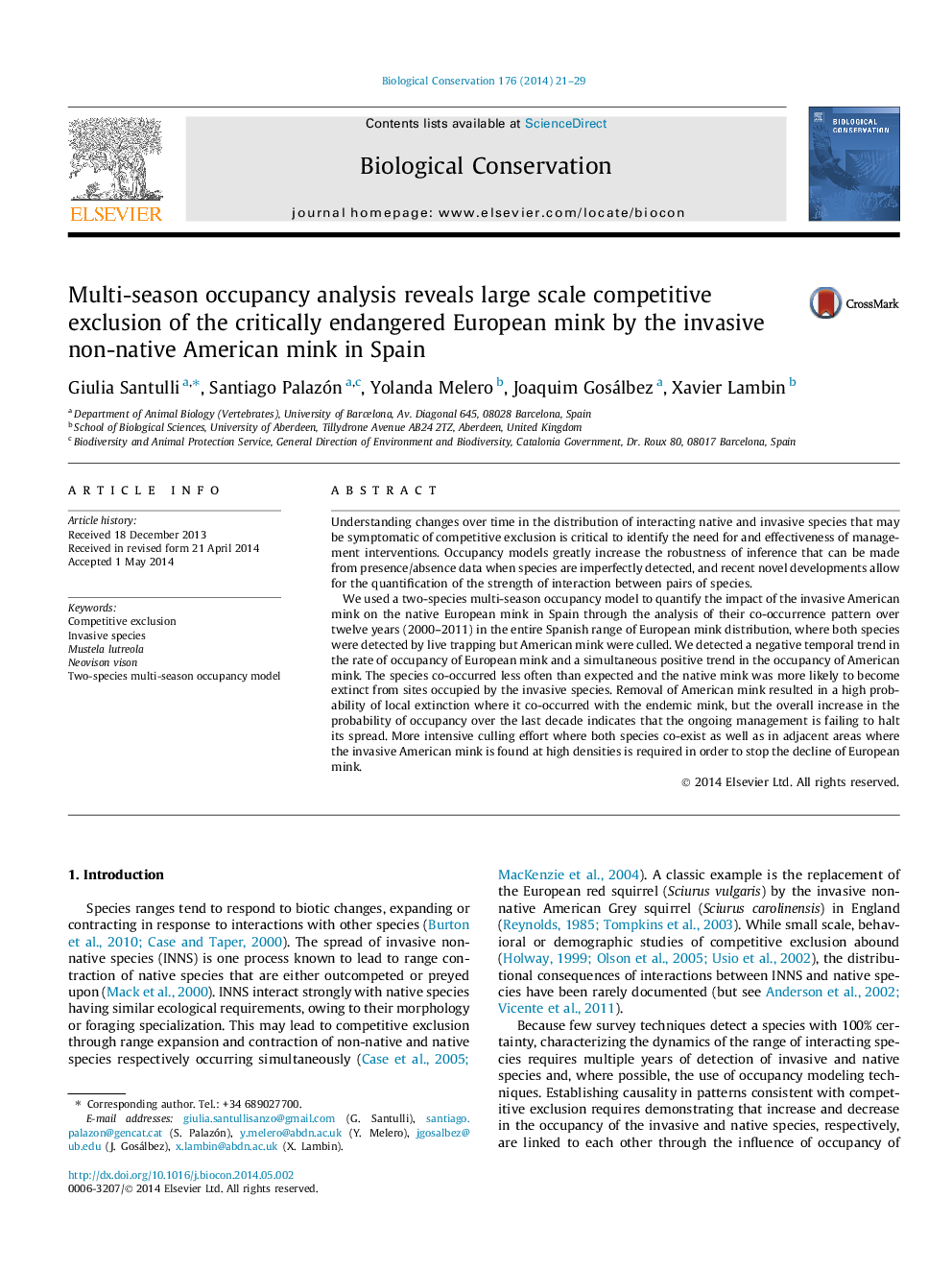| Article ID | Journal | Published Year | Pages | File Type |
|---|---|---|---|---|
| 6299443 | Biological Conservation | 2014 | 9 Pages |
Abstract
We used a two-species multi-season occupancy model to quantify the impact of the invasive American mink on the native European mink in Spain through the analysis of their co-occurrence pattern over twelve years (2000-2011) in the entire Spanish range of European mink distribution, where both species were detected by live trapping but American mink were culled. We detected a negative temporal trend in the rate of occupancy of European mink and a simultaneous positive trend in the occupancy of American mink. The species co-occurred less often than expected and the native mink was more likely to become extinct from sites occupied by the invasive species. Removal of American mink resulted in a high probability of local extinction where it co-occurred with the endemic mink, but the overall increase in the probability of occupancy over the last decade indicates that the ongoing management is failing to halt its spread. More intensive culling effort where both species co-exist as well as in adjacent areas where the invasive American mink is found at high densities is required in order to stop the decline of European mink.
Related Topics
Life Sciences
Agricultural and Biological Sciences
Ecology, Evolution, Behavior and Systematics
Authors
Giulia Santulli, Santiago Palazón, Yolanda Melero, Joaquim Gosálbez, Xavier Lambin,
